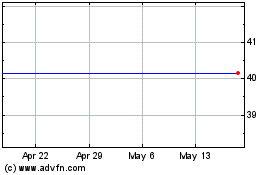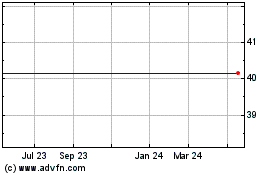via NewMediaWire – Neovasc Inc. (“Neovasc” or the “Company”)
(NASDAQ, TSX: NVCN) today announced that European Heart Journal -
Case Reports has published an article titled, “Implantation of the
Coronary Sinus Reducer for Refractory Angina due to Coronary
Microvascular Dysfunction in the Context of Apical Hypertrophic
Cardiomyopathy – a Case Report.” The article is authored by Dr.
Kevin Cheng, et al, at the National Heart and Lung Institute
Imperial College London, Royal Brompton Hospital, London.
The report details the case of a 42-year-old female suffering
from a history of daily angina chest pain. Despite previous
coronary stent implantation procedures, her pain was debilitating
and frequent. She was taking multiple medications to help address
her angina, yet experienced angina pain two to five times per day,
with episodes lasting from ten minutes to two hours. A diagnostic
angiogram revealed her coronary arteries were not obstructed and
blood supply to her heart was normal. The previously placed stents
were patent, but her chest pain persisted. The patient was
diagnosed with microvascular dysfunction, a disease affecting the
small vessels in the heart that disproportionately effects women.
She underwent implantation of a Neovasc ReducerTM (“Reducer”, CE
Marked and under US IDE investigation) at the Royal Brompton
Hospital under the supervision of Dr. Ranil de Silva.
A Positron Emission Tomography (“PET”) scan was performed
before, and six months after the Reducer procedure. The initial PET
scan revealed that a portion of her heart muscle was not receiving
sufficient blood flow, likely causing her chest pain. The follow-up
PET scan, after Reducer implantation, revealed that the area of her
heart muscle that previously was not receiving adequate blood flow
had improved, correlating with a substantial improvement in her
symptoms and quality of life. The follow-up PET scan also
documented that blood supply to her heart muscle was normalized,
away from areas with more than sufficient blood supply
(non-ischemic regions) to the under-supplied, ischemic regions.
“It’s extremely gratifying to see patients long-suffering from
refractory angina, most of whom have exhausted conventional
treatment options, feeling better and improving their quality of
life,” stated Dr. de Silva. “Microvascular dysfunction is an
important and frequently under-recognised cause of angina, with
patients frequently experiencing life-limiting symptoms for years
before their condition is diagnosed and treated. At the Royal
Brompton Hospital, we focus on the management of these patients and
are very pleased to provide a treatment that offers hope for
appropriately selected patients suffering from the debilitating
symptoms associated with this condition.” He added, “Cases such as
these have motivated us to undertake the REMEDY-PILOT trial, funded
by the British Heart Foundation, which will evaluate the effects of
the coronary sinus Reducer in patients with coronary microvascular
dysfunction.”
About Reducer
The Reducer is CE-marked in the European Union for the treatment
of refractory angina, a painful and debilitating condition that
occurs when the coronary arteries deliver an inadequate supply of
blood to the heart muscle, despite treatment with standard
revascularization or cardiac drug therapies. It affects millions of
patients worldwide, who typically lead severely restricted lives as
a result of their disabling symptoms, and its incidence is growing.
The Reducer provides relief of angina symptoms by altering blood
flow within the myocardium of the heart and increasing the
perfusion of oxygenated blood to ischemic areas of the heart
muscle. Placement of the Reducer is performed using a minimally
invasive transvenous procedure.
While the Reducer is not approved for commercial use in the
United States, it is being studied in the COSIRA-II Clinical Trial,
and the FDA granted Breakthrough Device designation to the Reducer
in October 2018. Breakthrough designation is granted by the FDA in
order to expedite the development and review of a device that
demonstrates compelling potential to provide a more effective
treatment or diagnosis of life-threatening or irreversibly
debilitating diseases. In addition, there must be no FDA approved
treatments presently available, or the technology must offer
significant advantages over existing approved
alternatives.
Refractory angina, resulting in continued symptoms despite
maximal medical therapy and without revascularization options, is
estimated to affect 600,000 to 1.8 million Americans, with 50,000
to 100,000 new cases per year.
About Neovasc Inc.
Neovasc is a specialty medical device company that develops,
manufactures, and markets products for the rapidly growing
cardiovascular marketplace. Its products include Reducer, for the
treatment of refractory angina, which is under clinical
investigation in the United States and has been commercially
available in Europe since 2015, and Tiara™, a product under
clinical investigation for the transcatheter treatment of mitral
valve disease. The company remains committed to the ongoing
follow-up of patients in Tiara clinical trials and has paused all
other Tiara activities. For more information visit:
www.neovasc.com.
InvestorsMike CavanaughICR WestwickePhone:
+1.646.877.9641Mike.Cavanaugh@westwicke.com
MediaSean LeousICR WestwickePhone:
+1.646.866.4012Sean.Leous@westwicke.com
Forward-Looking Statement DisclaimerCertain statements in
this news release contain forward-looking statements within the
meaning of the U.S. Private Securities Litigation Reform Act of
1995 and applicable Canadian securities laws that may not be based
on historical fact. When used herein, the words expect, anticipate,
estimate, may, will, should, intend, believe, and similar
expressions, are intended to identify forward-looking statements.
Forward-looking statements contained in the news release may
involve, but are not limited to, statements regarding the aims and
objectives of the Reducer study, the nature and implications of the
results of the Reducer study, the potential commercialization of
the Reducer in the United States, the growing incidence of
refractory angina, the growth of the cardiovascular marketplace,
plans and timeline to undertake the REMEDY-PILOT-trial, including
the purpose of such trial. Forward-looking statements are based on
estimates and assumptions made by the Company in light of its
experience and its perception of historical trends, current
conditions and expected future developments, as well as other
factors that the Company believes are appropriate in the
circumstances. Many factors and assumptions could cause the
Company's actual results, performance or achievements to differ
materially from those expressed or implied by the forward-looking
statements, including, without limitation, risks around the
Company's ability to continue as a going concern; risks around the
Company's history of losses and significant accumulated deficit;
risks related to the COVID-19 coronavirus outbreak or other health
epidemics, which could significantly impact the Company's
operations, sales or ability to raise capital or enroll patients in
clinical trials and complete certain Tiara development milestones
on the Company's expected schedule; risks relating to the Company's
need for significant additional future capital and the Company's
ability to raise additional funding; risks relating to the sale of
a significant number of Common Shares; risks relating to the
possibility that the Company's Common Shares may be delisted from
the Nasdaq or the TSX, which could affect their market price and
liquidity; risks relating to the Company's conclusion that it did
have effective internal control over financial reporting as of
December 31, 2021 and 2020 but not at December 31, 2019; risks
relating to the Common Share price being volatile; risks relating
to the Company's significant indebtedness, and its effect on the
Company's financial condition; risks relating to the influence of
significant shareholders of the Company over our business
operations and share price; risks relating to lawsuits that the
Company is subject to, which could divert the Company's resources
and result in the payment of significant damages and other
remedies; risks relating to claims by third-parties alleging
infringement of their intellectual property rights; risks relating
to the Company's ability to establish, maintain and defend
intellectual property rights in the Company's products; risks
relating to results from clinical trials of the Company's products,
which may be unfavorable or perceived as unfavorable; risks
associated with product liability claims, insurance and recalls;
risks relating to use of the Company's products in unapproved
circumstances, which could expose the Company to liabilities; risks
relating to competition in the medical device industry, including
the risk that one or more competitors may develop more effective or
more affordable products; risks relating to the Company's ability
to achieve or maintain expected levels of market acceptance for the
Company's products, as well as the Company's ability to
successfully build its in-house sales capabilities or secure
third-party marketing or distribution partners; risks relating to
the Company's ability to convince public payors and hospitals to
include the Company's products on their approved products lists;
risks relating to new legislation, new regulatory requirements and
the efforts of governmental and third-party payors to contain or
reduce the costs of healthcare; risks relating to increased
regulation, enforcement and inspections of participants in the
medical device industry, including frequent government
investigations into marketing and other business practices; risks
relating to the extensive regulation of the Company's products and
trials by governmental authorities, as well as the cost and time
delays associated therewith; risks relating to post-market
regulation of the Company's products; risks relating to health and
safety concerns associated with the Company's products and
industry; risks relating to the Company's manufacturing operations,
including the regulation of the Company's manufacturing processes
by governmental authorities and the availability of two critical
components of the Reducer; risks relating to the possibility of
animal disease associated with the use of the Company's products;
risks relating to the manufacturing capacity of third-party
manufacturers for the Company's products, including risks of supply
interruptions impacting the Company's ability to manufacture its
own products; risks relating to the Company's dependence on limited
products for substantially all of the Company's current revenues;
risks relating to the Company's exposure to adverse movements in
foreign currency exchange rates; risks relating to the possibility
that the Company could lose its foreign private issuer status under
U.S. federal securities laws; risks relating to the possibility
that the Company could be treated as a "passive foreign investment
company"; risks relating to breaches of anti-bribery laws by the
Company's employees or agents; risks relating to future changes in
financial accounting standards and new accounting pronouncements;
risks relating to the Company's dependence upon key personnel to
achieve its business objectives; risks relating to the Company's
ability to maintain strong relationships with physicians; risks
relating to the sufficiency of the Company's management systems and
resources in periods of significant growth; risks relating to
consolidation in the health care industry, including the downward
pressure on product pricing and the growing need to be selected by
larger customers in order to make sales to their members or
participants; risks relating to the Company's ability to
successfully identify and complete corporate transactions on
favorable terms or achieve anticipated synergies relating to any
acquisitions or alliances; risks relating to conflicts of interests
among the Company's officers and directors as a result of their
involvement with other issuers; risks relating to future issuances
of equity securities by the Company, or sales of common shares or
conversions of convertible notes, and exercise of warrants, options
and restricted stock units by our existing security holders,
causing the price of the Company's securities to fall; and risks
relating to anti-takeover provisions in the Company's constating
documents which could discourage a third-party from making a
takeover bid beneficial to the Company's shareholders. These risk
factors and others relating to the Company are discussed in greater
detail in the "Risk Factors" section of the Company's Annual Report
on Form 20-F for the year ended December 31, 2021, and the
Company's Management Discussion and Analysis for the three and nine
months ended September 30, 2022 (a copy of which may be obtained at
www.sec.gov). The Company has no intention and undertakes no
obligation to update or revise any forward-looking statements
beyond required periodic filings with securities regulators (copies
of which may be obtained at www.sedar.com or www.sec.gov), whether
because of new information, future events or otherwise, except as
required by law.
Neovasc (TSX:NVCN)
Historical Stock Chart
From Dec 2024 to Jan 2025

Neovasc (TSX:NVCN)
Historical Stock Chart
From Jan 2024 to Jan 2025
